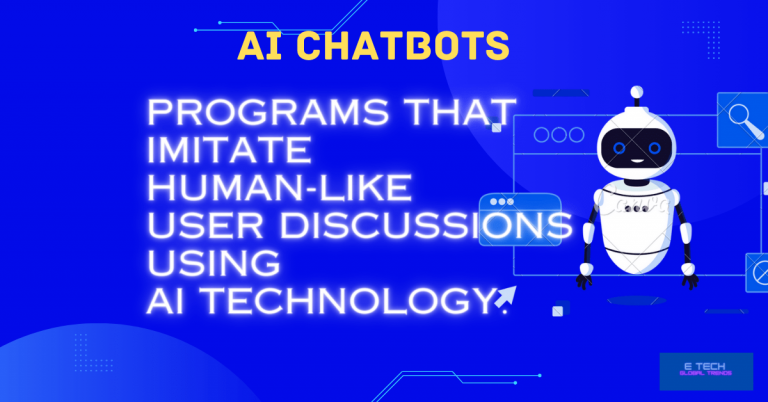Computational Thinking
In the past 5 years, searches for “microlearning” have grown by 242%. Microlearning, commonly referred to as bite-size learning, is a teaching strategy that uses brief, repeating lessons. Studies have indicated that compared to conventional teaching approaches, microlearning might increase pupils’ information retention by up to 17%. So do you mind if this tech concept will make a huge leap? If so start reading this article “computational thinking”.
What is computational thinking?
A method of solving problems logically entails organizing a number of issues. potential solutions like that of a computer. The technique of decomposing a complicated problem such that computers can comprehend it is computational thinking.
We can utilize computers to aid with issue solving. However, in order to address a problem, it must first, comprehend, along with potential solutions. We are able to achieve this thanks to computational thinking.
The following are the four facets of computational thinking
- Decomposition: Decomposition is the method of subdividing a difficult problem into simpler issues that can solve independently or collaboratively. A real-world challenge like manufacturing a car can brake down into smaller jobs like creating a tire, choosing the automobile’s colors, designing its controls, etc.
- Pattern Recognition: Finding patterns via smaller, broken-down difficulties in order to discover a solution to a larger, more complicated challenge. this is pattern recognition.
- Abstraction: In computer science, it is the technique of leaving out the most crucial components of a real-world issue while removing the unnecessary ones. For example, mapping could use simpler colors to emphasize a path between the highlighted sites A and B while omitting other elements of the map, such as natural colors to show the spread of land and buildings.
- Designing algorithms: Developing applications using coding and programming is called algorithmic design. Such as using flowcharts to visualize how your application software will operate, and potentially having success criteria to assess your job
Do computers think like humans?
No, and never. The short answer is that.
We‘ll add a few questions to prove that. read and answer carefully.
Is anything imaginable attainable through programming?
Not at all.
Is it possible to predict a program’s outcome in advance? No.
Is there an indefinitely rapid way to calculate an answer? No
Can data about something store indefinitely? No
Is it possible to instill thought and emotion in a computer? No. Not now, and perhaps never.
So then what is the purpose here? The concept can use to create similar education purposes like microlearning.
Well, how?
Read until the end. You will come up with a perfect answer.
Why computational thinking became important today?
A good question is due to the emerging micro-learning concept.
Human groups are now using this similar strategy.
The theory behind this is that organizations may more easily resolve difficult issues by splitting up a primary task into multiple smaller ones.
This method has become more popular as a result of the numerous studies that have linked computational thinking to improved academic achievement.
a method of solving problems logically that entails organizing a number of issues and potential solutions like that of a computer.
.
Although the concept of microlearning originated in the field of education, it is now use to enhance employee training.
- Disprz,
- Xpeer, and
- Code of Talent
is a few examples of popular microlearning systems.
Computers manipulate data, not think. They do it really quickly, but it isn’t thinking since if it were, a straightforward logical gate would be a thinking creature.
Do software engineers employ computational thinking?
Of course not, Thinking in terms of computation is abstract thinking. When you think of computation in this way, it performs like in the abstract.
With his Turing machines and the subsequent step of higher abstraction, Turing created the Universal Turing machine, which was capable of doing all other tasks.
Alonzo Church accomplished it differently by stating a calculation in terms of a function that was up of other functions.
The abstractions are defined and arranged in computationally efficient ways in every computational model. An abstract machine, that is what this is.
For instance, we understand what 3 + 4 implies when we read it (in several aspects). We don’t conceive of 3 + 4 as loading 3 into one register, then 4 into another, sending the contents of those registers to an integer adding a unit, retrieving the result from the unit, putting it in another register, and storing it in memory. It is extremely container-oriented, thinking in terms of registers and numeric units, which are scarcely abstractions, so yes, it is algorithmic thinking and also computational at one level. Thinking about such abstractions, such as what is “3,” “4”, and “+,” is what computational thinking entails. However, there are even higher abstraction levels in programming,
such as;
- “what is a video?
- What may a video be used for?
Computing-based thought considers the contents rather than the container.
Even modern computers are only abstract machines with hardware.
Thinking in terms of “how the computer works,” “under the hood,” or “near to the metal” is NOT computational thinking. Although it seems sensible, that is incorrect.
Thus, in order to implement programming, programmers utilize computational reasoning to organize abstractions at the appropriate level.
Is it accurate to say that computers only have one thought at a time?
In actuality, they are capable of handling 4, 8, 16, 32, 64, 128, 256, or most recently 512 objects at once that produce a crystal clock. Every cycle, special operations like adding, writing to a register, and other things trigger comparing a pattern with the bits on memory managed by specific address registers. Computers do indeed think a lot at once, if comparison-based thinking counts, given that they may have many CPUs like 2, 4, 8, 16, or 32, depending on the processor. Comparing is carried out using an ALU, which mostly uses arithmetic as an Arithmetic Logic Unit.
What is the difference between computational thinking and computer science?
The information necessary for developing general-purpose computer software is found in the field of computer science. It closely resembles the discipline of electrical engineering. the field of study that covers the information necessary for the development of general-purpose computer hardware.
The capacity to recognize the core components of an issue, use knowledge to solve them, and come up with abstractions to explain the answer. this is computational thinking. This ability is crucial to many fields of study, not only computer sciences, including biology, engineering, economics, and business. Because of this, it’s more commonly critical thinking than computational thinking.
The link between computer technology and critical thinking may be compared in many respects to the relationship between wisdom and intelligence. They frequently evolve together because of their strong synergy. The main distinction between the two is that one is learned from a book, whilst the other is acquired by actual experience through trial & error.
read more on related topics: hyper-automation trends, thinking machines as AI







